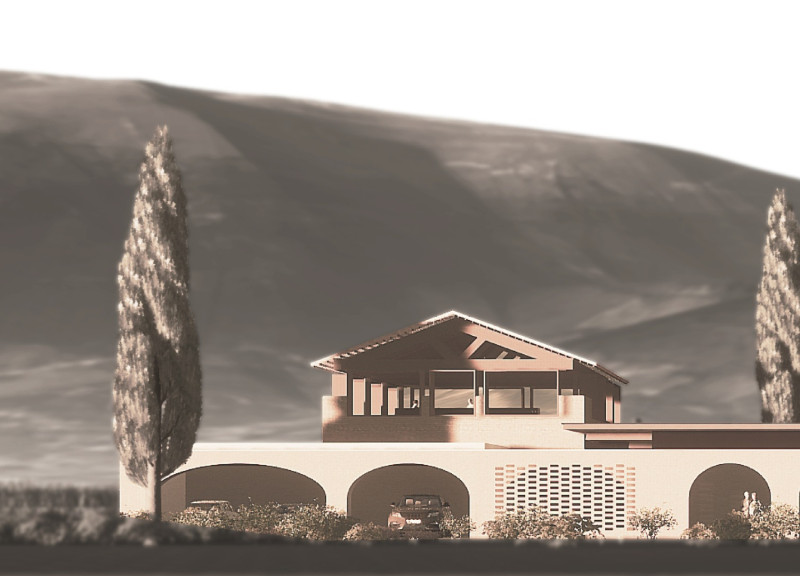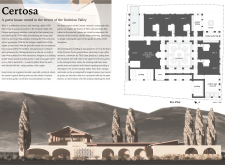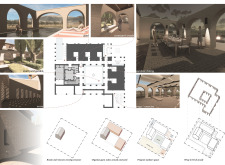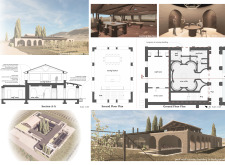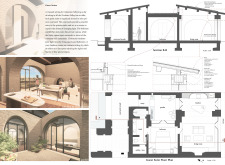5 key facts about this project
The Certosa project is located in the Umbrian Valley of Italy and is designed as a guest house that reflects the region's unique character. The design is inspired by traditional monastic architecture, which connects to the area's rich history and spiritual significance. By repurposing an existing farm building and incorporating new construction, the design achieves a sense of authenticity while serving modern needs for visitors.
Design Concept
The approach emphasizes the connection between the buildings and the landscape, creating a harmonious environment for guests. At the center lies a courtyard that encourages interaction among visitors. This space features the gentle sound of flowing water and is shaded by cypress trees, providing a peaceful backdrop that enhances the overall experience.
Arrangement of Spaces
Guest suites are arranged around this central courtyard, allowing for privacy while also keeping guests close to shared areas. Each suite includes its own private courtyard, allowing retreat while remaining connected to communal spaces. Large openings in the living areas allow ample natural light and frame views of the surrounding vineyards and mountains, highlighting the beauty of the Umbrian landscape.
Material Selection
The project employs local brick, fostering a strong connection to the area. This choice reflects the regional style and contributes to the overall look of the guest house. Sustainability is a priority, as existing materials are reused, minimizing environmental impact and adding to the project's character.
Sustainability Features
Green roofs are placed on flat surfaces, supporting temperature control and managing water runoff. These roofs also provide space for diverse plant life, promoting local biodiversity. Water features in the courtyard and private gardens help cool the outdoor environment, enhancing the overall experience.
The design focuses on communal areas like open kitchens and dining spaces, where the relationship to local food traditions is emphasized. The arrangement of these spaces fosters interaction between guests and chefs, enriching the dining experience and celebrating the sense of community that is an essential part of staying at the guest house.


